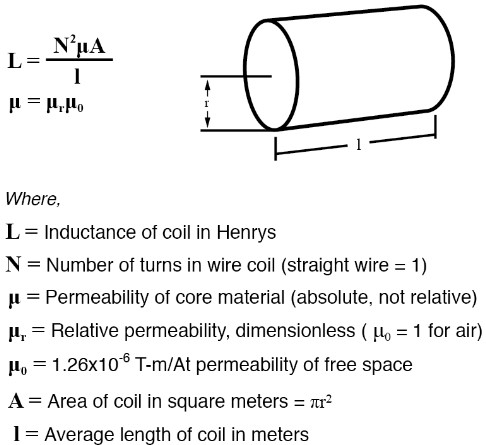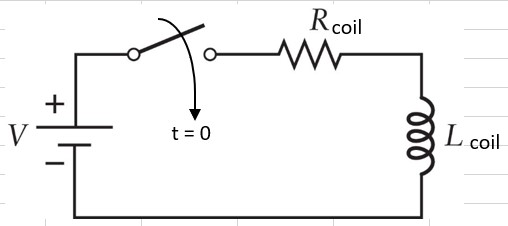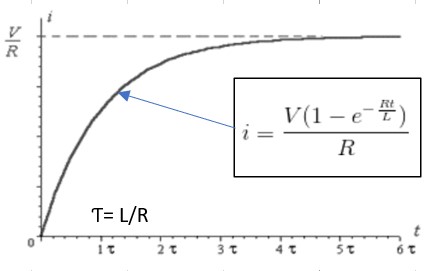Posted by Robert M. Haney, PE on Mar 21st 2022
Solenoid Coil Parameters – Their Effects and Measurement (Resistance, Inductance, Reactance, Impedance, & Turns Count)
Several solenoid coil parameters affect the performance of solenoid valves. These include resistance, Inductance, reactance, Impedance and turns count. Measurement of these parameters may sometimes be needed to predict valve performance (actuating force, response times, power dissipation, size arc suppressors, etc).
Inductance, reactance, Impedance, and turns count are parameters not typically specified on the coil drawings or datasheets. They are not controlled characteristics for the coil design. But these parameters can be measured or calculated if needed.
Resistance and Impedance
The terms Resistance and Impedance are often used interchangeably but they are not exactly the same thing. The solenoid valve customer might sometimes ask for Impedance when he/she really means the Resistance. Coil Resistance is generally specified on drawings or datasheets.
The Resistance of the coil (in Ohms) is simply the ratio of the applied DC voltage to the DC current at room temperature (~20°C or 25°C). The resistance will increase with increased coil temperature due to the temperature coefficient of resistance of copper*. The Impedance of the coil is the ratio of the applied AC voltage to the AC current for an AC coil.
*Click here for more detail on the resistance of solenoid coils vs temperature.
The Resistance of most DC and AC coils can be measured directly with a digital multimeter (DMM). Resistance of AC coils that have an integral bridge rectifier in the coil cannot be measured directly with a DMM. Some coil manufacturer's AC coils are actually DC coils with a full wave bridge rectifier embedded in the coil as shown in the figure below. To determine the resistance of an AC coil of this type, one can connect a DC voltage source (~12Vdc or 24Vdc) and a DMM to measure current as shown below.

Figure 1 - Measuring resistance of an AC coil with an integral bridge rectifier.
The DC voltage source can be a DC power supply or a battery. The approximate coil resistance can be calculated using the formula below to correct for the voltage drop in the bridge rectifier.
Rcoil = (Vdc -1.5V) / Adc
For AC coils without an integral bridge rectifier the Impedance is the combination of Resistance and Reactance. Resistance is the DC part of the Impedance and Reactance is the AC part of the Impedance (See Below).

Figure 2 - The impedance triangle (Z, R, and X).
Reactance, Inductance, and Turns Count
Reactance is a function of Inductance, Capacitance, Frequency, and the magnetic properties of the solenoid valve actuator. The frequency is typically 60 or 50 Hertz. In a solenoid coil the capacitance is negligible so the Reactance is entirely Inductive Reactance (X L) and the Capacitive Reactance (XC) is zero. The Impedance is the vector sum of the Resistance and Inductive Reactance ( Z2 = R2 + X2). The angle Ɵ is the phase lag of the current waveform from the voltage waveform.
The Inductance (L) of a solenoid coil is a function of the Number of Turns (N), the coil dimensions of length (L) & cross- sectional Area (A), and the Permeability (µ) of the valve magnetic circuit. Inductance can be measured with an LCR meter. Inductive Reactance is smaller at low frequencies and larger at high frequencies.

Figure 3 - Ihe inductance formula.
The inductive reactance is given by:
XL = 2 π f L
XL = reactance in ohms (Ω)
f = frequency in hertz (Hz)
L = inductance in henrys (H)
The AC current and AC power to AC coils is primarily determined by the inductive reactance of the solenoid coil. And the inductance of the AC coil varies with the coil conditions.
AC Coil Current Characteristics
For AC coils, inductance plays the major role in limiting the current through the coil. The position of the valve armature will affect the coils inductance. With the armature fully seated, the inductance will be at its highest and will limit the current to its “holding” value. With the armature moved towards its deenergized position, the inductance will be reduced, and the current flow will be at its maximum. This is the “inrush” current that occurs when the solenoid is initially energized.
In typical solenoid valve operation, the duration of the inrush current is very short (~20 to 50 mSec). Even though the duration is short, the voltage source for the solenoid must be capable of supplying the inrush current. The current will drop to the lower holding current after the armature has fully seated.
DC Coil Current Characteristics
For steady DC voltage (frequency zero), XL is zero (no opposition), which means that inductors pass DC current, but resist AC current. So for a DC coil driving an ON/OFF valve the inductance does not affect the steady state current flow. It merely provides a short delay in current response. (An exponential response with a Time Constant of Ƭ = L/R).

Figure 4 - DC solenoid coil equivalent circuit.

Figure 5 - DC Solenoid exponential current vs time.
The Time Constant for DC coils is typically a few milliseconds for just the bare coil, but increases considerably when mounted on the valves. This delay in current response limits the maximum cycle rate of an ON/OFF solenoid valve.
The coil inductance also results in an inductive voltage transient when the coil current is turned off. This voltage transient results in arcing that can be damaging to the electronic switches or the electromechanical switches or contacts that drive the coil. The devices that drive the coil are typically protected from this damage by placing a diode or TVS suppressor across the coil. These diodes or suppressors can be embedded in the coil or installed externally in the electrical circuit or the electronic control system. More complete discussion of arc suppression in solenoid coils will be provided in a separate article.
When a pulse width modulation (PWM) driver is used to control the solenoid current the coil inductance has an effect on the average current and ripple current. More detail on the effect of inductance on solenoid coil current for PWM applications will be provided in a separate article. Coil inductance can be measured be measured with an LCR meter. Coil Turns can be measured with a special Turns Counting instrument.
For help measuring a coil with an integral rectifier or selecting a TVS/diode, contact us!
About the Author - Robert M. Haney, PE
Robert M. Haney, P.E. (Rockford, Illinois), is an electrical engineering consultant and adjunct instructor with nearly 40 years of experience in the design, application, and field support of electronic controls and test equipment. He has written extensively about his areas of expertise, including "Solenoid Control, Testing, and Servicing" published by McGraw Hill (Available on Amazon.com). Robert is a registered Professional Engineer in Illinois with a BSEE from General Motors Institute (now Kettering University) and an MSEE from Marquette University. In addition to experience with controls for industrial engines, off-highway equipment, electric power generators, machine tools, and automatic machinery, he has taught DC/AC circuits, electronics, and technical math for Rock Valley College and mathematics for Rasmussen College, Embry-Riddle Aeronautical University, and Upper Iowa University. Mr. Haney has held engineering positions with United Technologies, Caterpillar, Delco Electronics, and Barber Colman Company, and consulting positions with Delta Power Company, Collins Aerospace, M'TE Hydraulics, and Dynacorp. He holds a patent on a tractor draft control system assigned to J.I. Case that uses solenoid coils as sensors (U.S. Patent #4,064,945). He is an active member of IEEE (Institute of Electrical and Electronics Engineers) and the Chicago/Rockford IEEE Consultants' Network; much of his work has been with the electronic control and testing of solenoids and solenoid-based devices.

